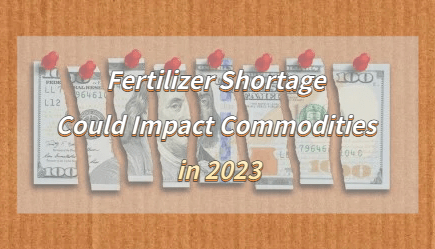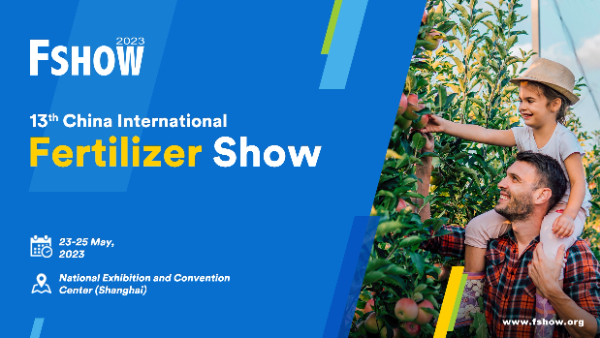
Exhibition time: 17-19 March, 2025 Shanghai, China
 中文
中文

Exhibition time: 17-19 March, 2025 Shanghai, China
 中文
中文

Heading into 2023, supply continues to be a prime concern when investing in agricultural commodities. This includes fertilizer, which has been going through a brewing supply crisis apart from the actual commodities at stake.
According to a Modern Farmer article, the fertilizer crisis "has been steadily growing since 2021—when the World Bank reported a 66-percent increase in the price of fertilizer, thanks to shortages—is likely to persist throughout 2023, according to a study by the Food and Agriculture Organization of the United Nations (FAO) along with the World Trade Organization (WTO)."
The article cited Russia's invasion of Ukraine as a primary issue, which lifted commodities prices earlier this year, feeding into a global food crisis that will likely continue into 2023. Additionally, inflation continues to be a concern, making it more expensive for farmers to utilize when growing crops.
"The two organizations piloted the study to highlight the need for improved access to fertilizer to avoid a food crisis," the article added. "Research shows that the shortage will continue into the new year, impacting agricultural production and food security worldwide, particularly in regions that rely heavily on imported inputs—such as Africa."
Where to Get Agricultural Commodities Exposure?
An anticipation in rising prices as result of the fertilizer crisis could fuel bullishness for commodities due to crimped supply. Heading into 2023, this will allow investors to pad their portfolios with assets that can continue to serve as an inflation hedge.
Given this, to play continued upside in agricultural commodities, consider a broad-based exchange traded fund (ETF) such as the Teucrium Agricultural Fund (TAGS). Whether it’s for a continued inflation hedge or to simply diversify a portfolio with more alternative assets as commodity prices push higher, a broad-based fund like TAGS is worth considering.
For investors looking for agriculture exposure who don’t know where to start, Teucrium can fill a void, offering investors an easy solution. Getting exposure to commodities doesn’t mean investors have to hold various positions that can muddle a portfolio.
Investors can essentially have it all in the convenience of TAGS. The fund combines exposure to corn, wheat, soybeans, and sugar through other Teucrium ETFs that focus specifically on these commodities, essentially offering investors a fund of funds.
The fund includes the Teucrium Wheat Fund (WEAT) and the Teucrium Corn Fund (CORN). For additional broad-based exposure, TAGS also includes the Teucrium Soybean Fund (SOYB) and the Teucrium Sugar Fund (CANE).
“The Teucrium Team has over 70 years of combined trading experience,” Teucrium noted on its website. “Since our founding in 2010 Teucrium has exclusively offered access to alternative markets through ETFs. We revolutionized the way commodity ETFs are structured by tailoring our funds according to the unique characteristics of each underlying market.”
Source: ETFTrends.com
